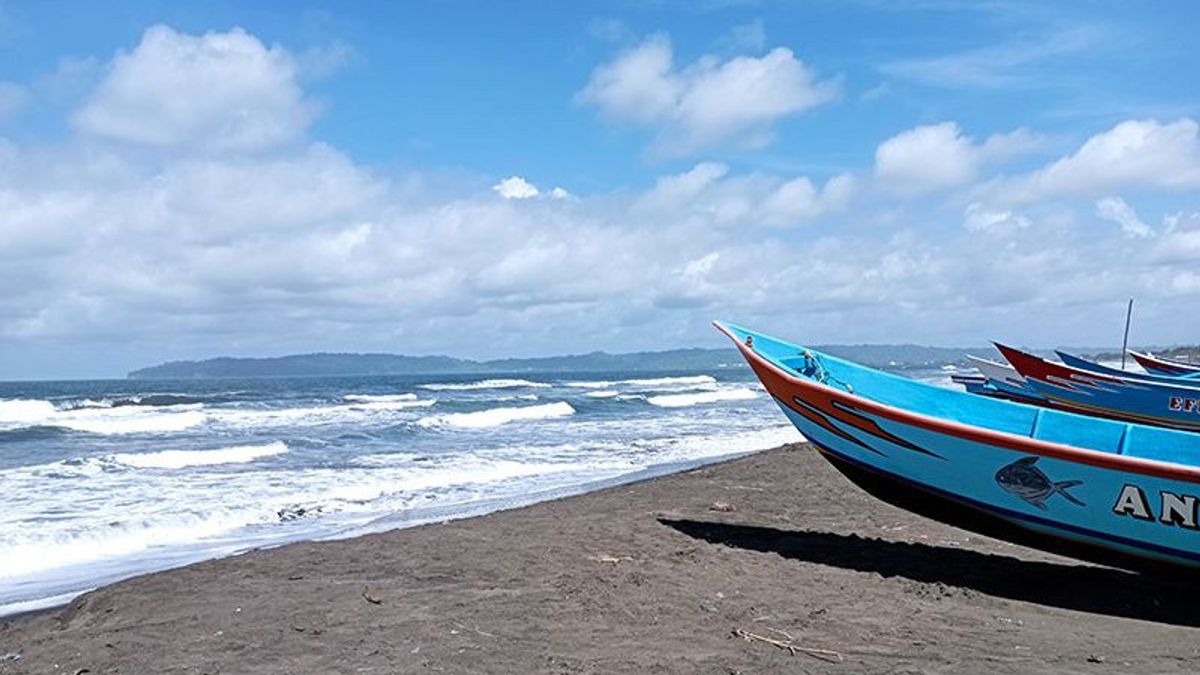CILACAP - Thousands of fishermen in Cilacap Regency did not go to sea because of high waves that hit the waters south of Central Java in recent days.
"Yesterday there were still those who were desperate to go to sea even though it was a short distance. But today the majority stopped going to sea and chose to moor their boats on the mainland, maybe around 90 percent (of the total fishermen in Cilacap Regency which reached more than 12,000 people)," said the Head of the Branch Executive Board. Indonesian Fishermen Association (DPC HNSI) Cilacap Sarjono Regency in Cilacap, Central Java, Antara, Friday, July 15.
According to him, the majority of fishermen who do not go to sea are small fishermen with boats with a capacity of under 5 gross tonnage (GT).
Meanwhile, fishermen who use large ships have gone to sea and are currently in the Indian Ocean looking for tuna, skipjack, and so on.
Sarjono admitted that some small fishermen (traditional fishermen, ed.) had been desperate to go to sea even though high waves had often occurred.
"Incidentally, various types of fish began to appear in the waters south of Central Java, especially Cilacap, so that fishermen went to sea in the early hours of the morning and returned to the mainland before noon," he said.
However, on Friday, he said, the majority of fishermen did not go to sea because the waves in the waters south of Cilacap were very high and the wind was blowing hard and the current was also strong.
According to him, this condition usually occurs at the beginning of the east wind season and will be stable or conducive at the peak of the season, although there is still the potential for high waves to occur.
"Maybe at the end of the month it will start to calm down, be stable. It's almost harvest time now, but the waves are high, then the wind and currents are also strong," said Sarjono.
He said fishermen continue to monitor weather developments in the waters south of Cilacap.
If in the next two days the waves are not very high, he said, fishermen will usually go to sea even though the wind is still strong because now various types of fish are starting to appear.
On a separate occasion, the Head of the BMKG Technician Group at the Tunggul Wulung Cilacap Meteorological Station, Teguh Wardoyo, said that his party had again issued a high wave early warning that was valid until July 17, 2022.
"We issued an early warning because the wave height in the waters south of West Java to the Special Region of Yogyakarta and the Indian Ocean south of West Java to DIY has the potential to reach 4-6 meters or very high," he said.
According to him, areas that have the potential for very high waves reaching the range of 4-6 meters include the southern waters of Sukabumi, southern waters of Cianjur, southern waters of Garut, southern waters of Tasikmalaya, southern waters of Pangandaran, southern waters of Cilacap, southern waters of Kebumen, southern waters of Purworejo, and the waters south of Yogyakarta.
In addition, the Indian Ocean south of Sukabumi, the Indian Ocean south of Cianjur, the Indian Ocean south of Garut, the Indian Ocean south of Tasikmalaya, the Indian Ocean south of Pangandaran, the Indian Ocean south of Cilacap, the Indian Ocean south of Kebumen, the Indian Ocean south of Purworejo, and the Indian Ocean south of Yogyakarta.
"The very high waves are influenced by wind patterns in the southern part of Indonesia, dominantly moving from east to southeast with wind speeds ranging from 5-30 knots. We will immediately inform all marine service users if there are further developments," said Teguh.
The English, Chinese, Japanese, Arabic, and French versions are automatically generated by the AI. So there may still be inaccuracies in translating, please always see Indonesian as our main language. (system supported by DigitalSiber.id)













